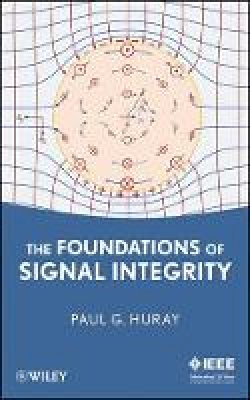
Stock image for illustration purposes only - book cover, edition or condition may vary.
The Foundations of Signal Integrity
Paul G. Huray
€ 219.20
FREE Delivery in Ireland
Description for The Foundations of Signal Integrity
Hardcover. Written as a textbook for both university courses and the many corporate classes taught in industry and is based on the author's cutting edge research The first book to examine the physical foundation of System Integrity and is based on electromagnetic theory derived from Maxwell's Equations. Num Pages: 340 pages, Illustrations (chiefly col.). BIC Classification: PHK; TJ. Category: (UP) Postgraduate, Research & Scholarly; (UU) Undergraduate. Dimension: 236 x 164 x 22. Weight in Grams: 640.
The first book to focus on the electromagnetic basis of signal integrity
Read moreThe Foundations of Signal Integrity is the first of its kind—a reference that examines the physical foundation of system integrity based on electromagnetic theory derived from Maxwell's Equations. Drawing upon the cutting-edge research of Professor Paul Huray's team of industrial engineers and graduate...
Product Details
Format
Hardback
Publication date
2009
Publisher
John Wiley and Sons Ltd United Kingdom
Number of pages
340
Condition
New
Number of Pages
368
Place of Publication
, United States
ISBN
9780470343609
SKU
V9780470343609
Shipping Time
Usually ships in 7 to 11 working days
Ref
99-50
About Paul G. Huray
Paul G. Huray, PhD, is Professor of Electrical Engineering at the University of South Carolina, where he has taught signal integrity, mathematical physics, and computer communications. Professor Huray introduced the first electromagnetics course to focus on signal integrity, and that program has produced more than eighty practicing signal integrity engineers now employed in academia, industry, and government. He earned his...
Read moreReviews for The Foundations of Signal Integrity
"Techniques that show how to obtain analytic solutions for ideal materials and boundary conditions are presented. These solutions are then used as a benchmark to solve real world problems via computational techniques. The book is written in the language of an electrical engineer." (Zentralblatt MATH, 2010)
